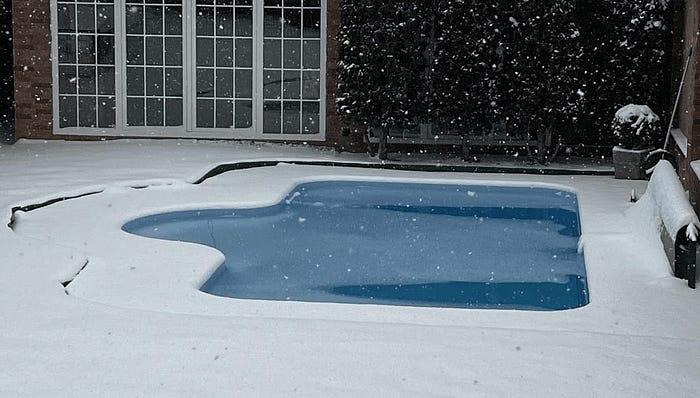Winterizing your swimming pool is essential for maintaining its quality and extending its life. Here’s an expanded winterization guide:
-
Balance Water Chemistry Thoroughly: Achieving proper chemical balance prevents scaling and corrosion, which can damage pool walls and equipment during freezing weather. Ensure pH levels stay at 7.4–7.6, alkalinity is within 80–120 ppm, and calcium hardness is around 200–400 ppm. Adding a shock treatment can also help prevent bacteria and algae growth.
-
Deep Clean the Pool: Remove all leaves, dirt, and other debris from the pool, paying special attention to corners, steps, and skimmers. For pools with liners, use a soft brush to avoid scratches. This step minimizes algae and prevents stains from forming over winter.
-
Reduce Water Levels Carefully: Lower the water to just below the skimmer and return lines. It’s crucial not to drain too much to prevent strain on the liner or exposure of surfaces to freeze damage. In colder regions, consider adding pool-safe antifreeze to plumbing lines after they’ve been drained, as a precaution against freezing.
-
Protect Plumbing with Antifreeze: Even after draining, residual water in the plumbing can freeze and expand, leading to cracked pipes. A pool-safe antifreeze solution can prevent this. After blowing out the lines with an air compressor, add antifreeze to ensure any leftover water is protected. Never use automotive antifreeze, as it’s unsafe for pool use.
-
Drain Pool Equipment Properly: Fully drain the filter, pump, heater, and other pool equipment. Backwash sand and DE filters and ensure that no water remains. Follow the manufacturer’s instructions closely to prevent freeze damage.
-
Add Winterizing Chemicals: Specialized winterizing chemicals, including long-lasting algaecides and enzyme products, help maintain water quality. Enzyme cleaners break down contaminants that may build up, reducing the risk of cloudy or scummy water when you reopen in spring.
-
Install a High-Quality Pool Cover: A sturdy pool cover prevents debris, animals, and even water evaporation. Options like solid vinyl covers are effective for blocking sunlight and reducing algae growth, while safety covers offer additional protection if you have pets or small children.
-
Regular Winter Check-Ins: Check the pool monthly during winter. Remove any snow, ice, or heavy debris from the cover to prevent stretching or tearing, and inspect for any gaps that might allow debris or sunlight into the water, which could lead to algae growth.
-
Use Air Pillows for Above-Ground Pools: Placing air pillows under the cover in above-ground pools helps distribute ice pressure evenly, reducing the risk of damage from expanding ice. This setup also prevents the cover from freezing to the water surface, which could cause tearing.
-
Plan for a Spring Inspection: When winter ends, inspecting the pool upon reopening can identify any potential damage from the season. Test the water chemistry, check filters, and ensure plumbing and equipment are in working order.
Winterizing your pool isn’t just about protecting it from cold; it’s an investment in your pool’s longevity. Proper winter care helps avoid costly repairs, so you can enjoy a hassle-free spring opening and make the most of your pool season. For a more detailed winterization guide, visit Modern Pools’ website.



